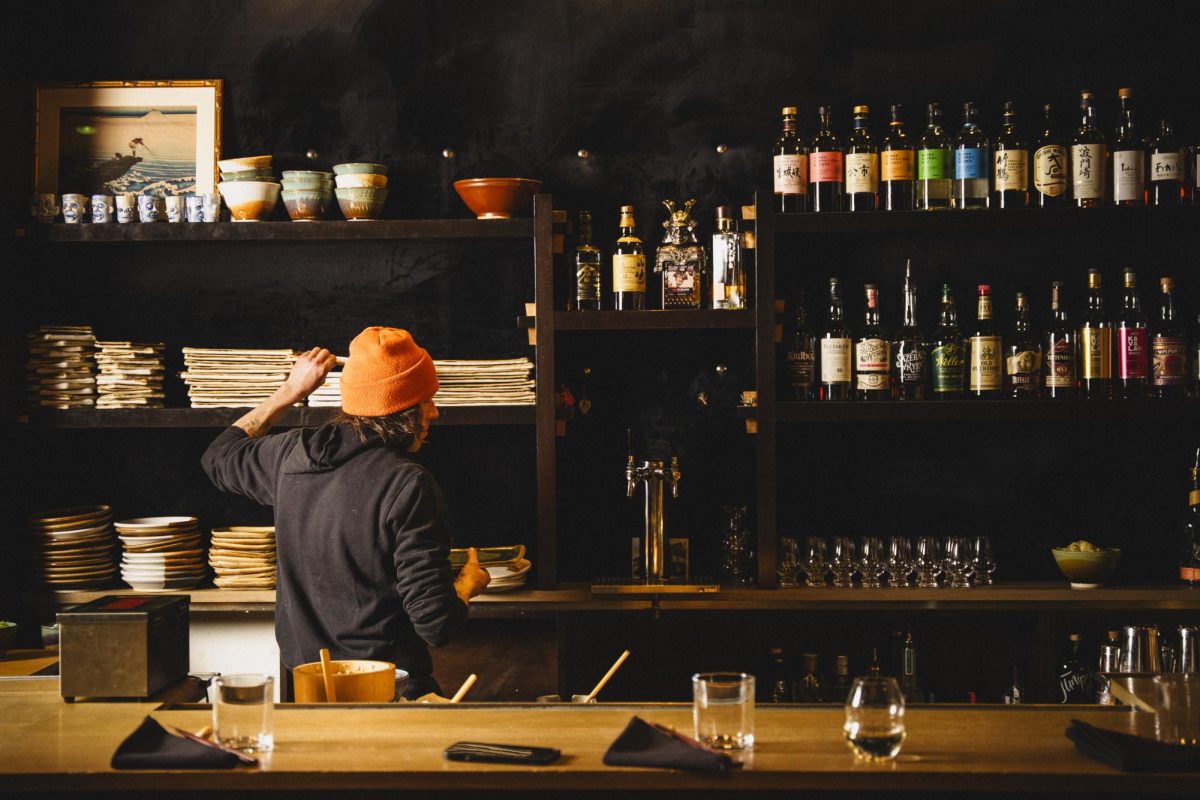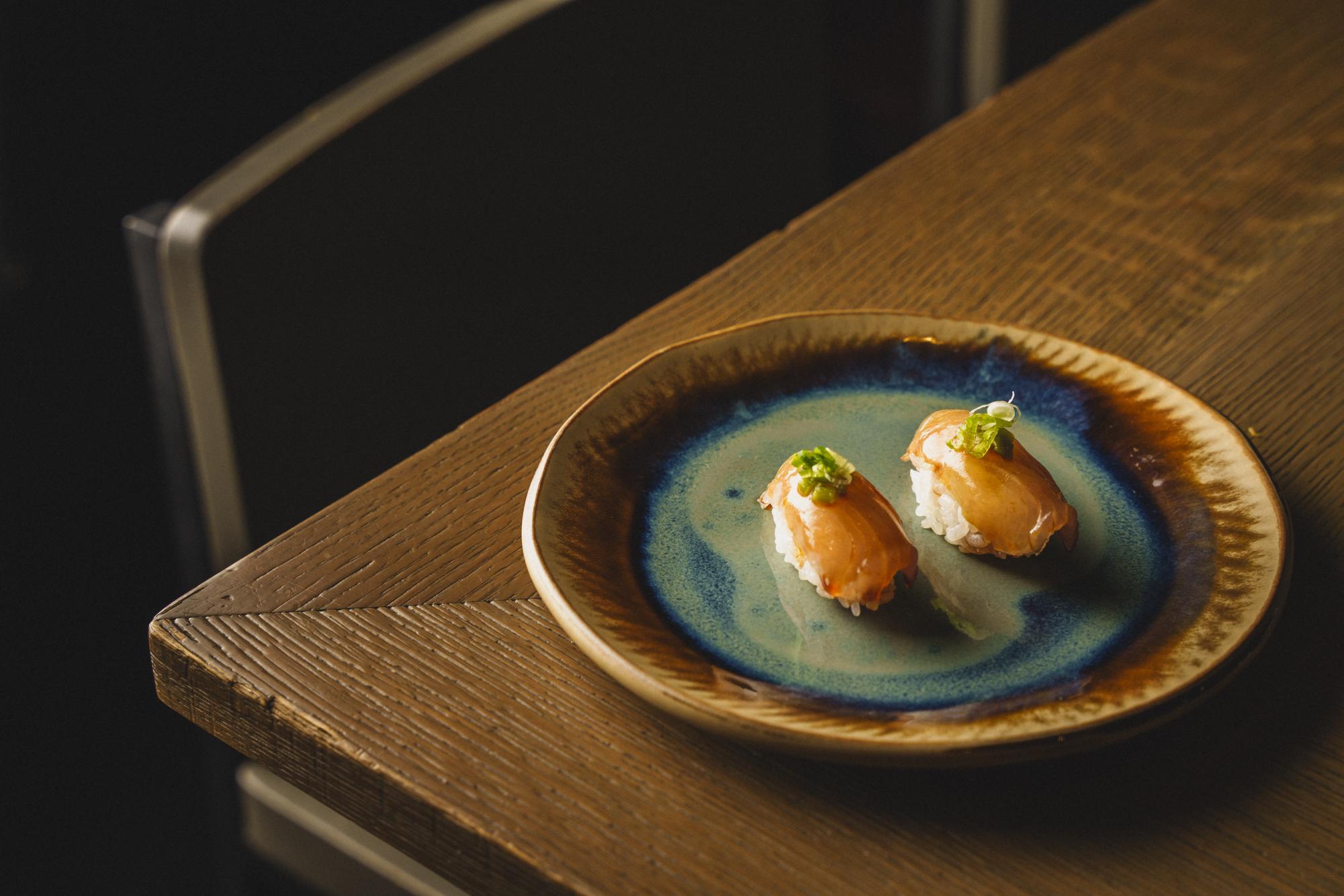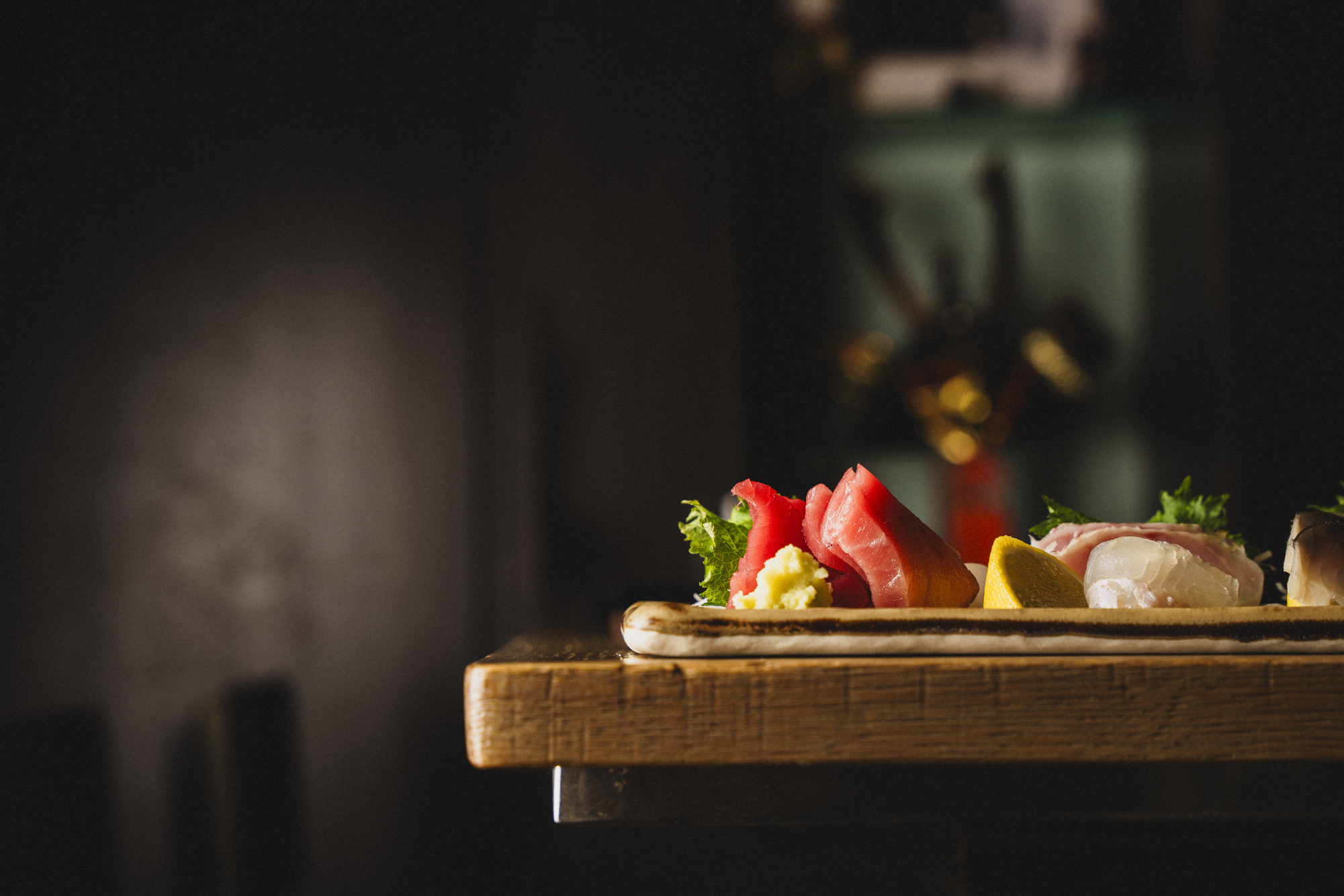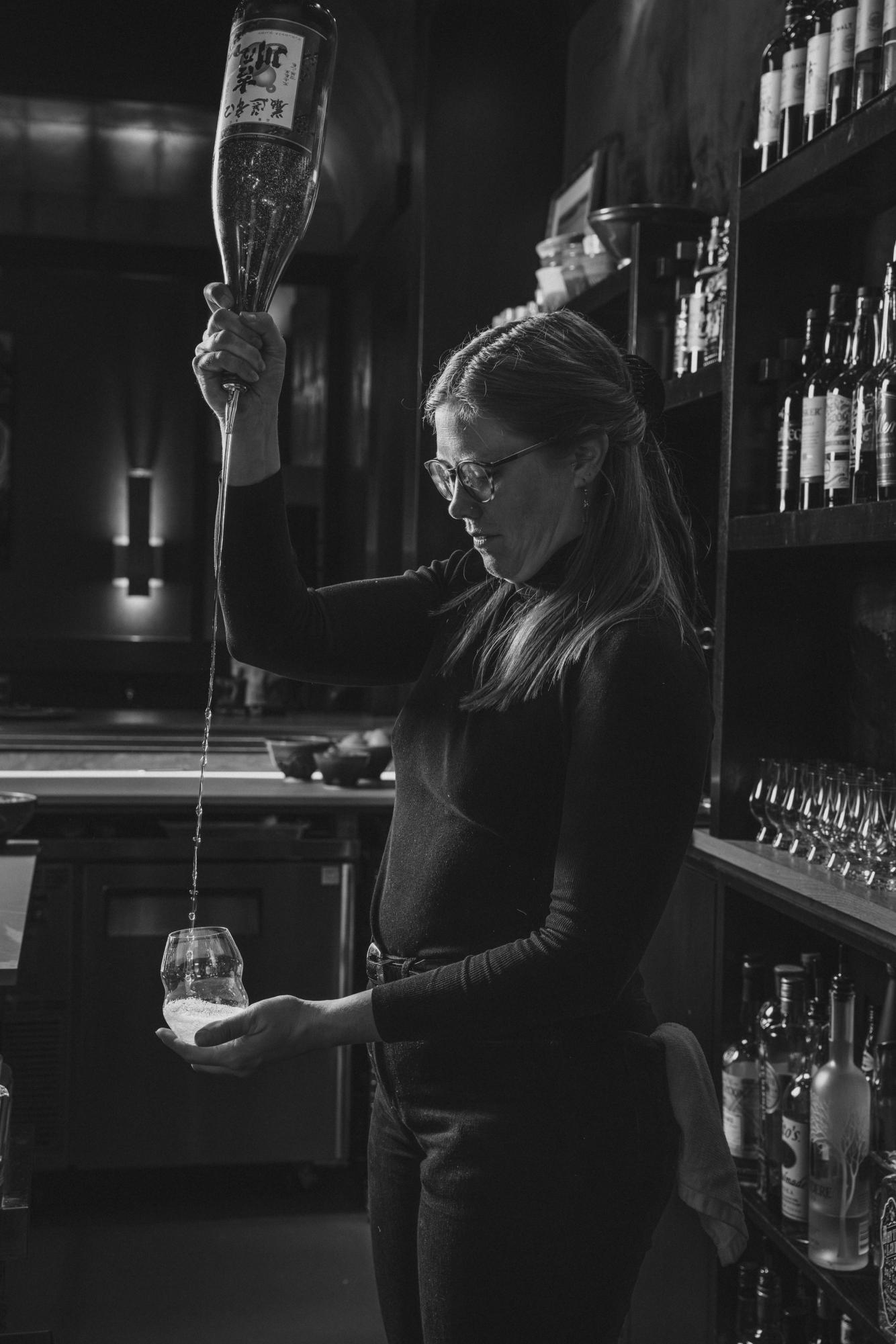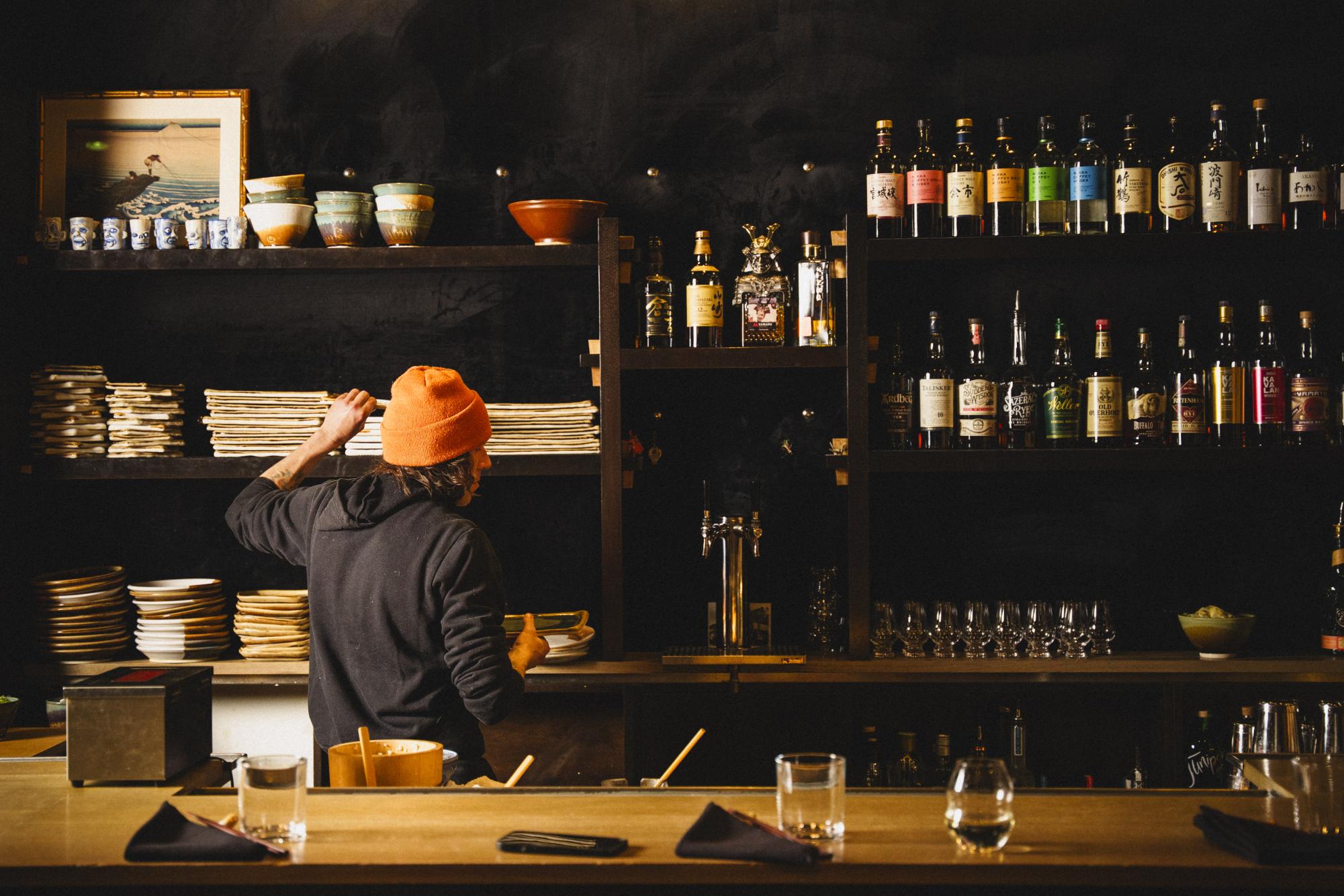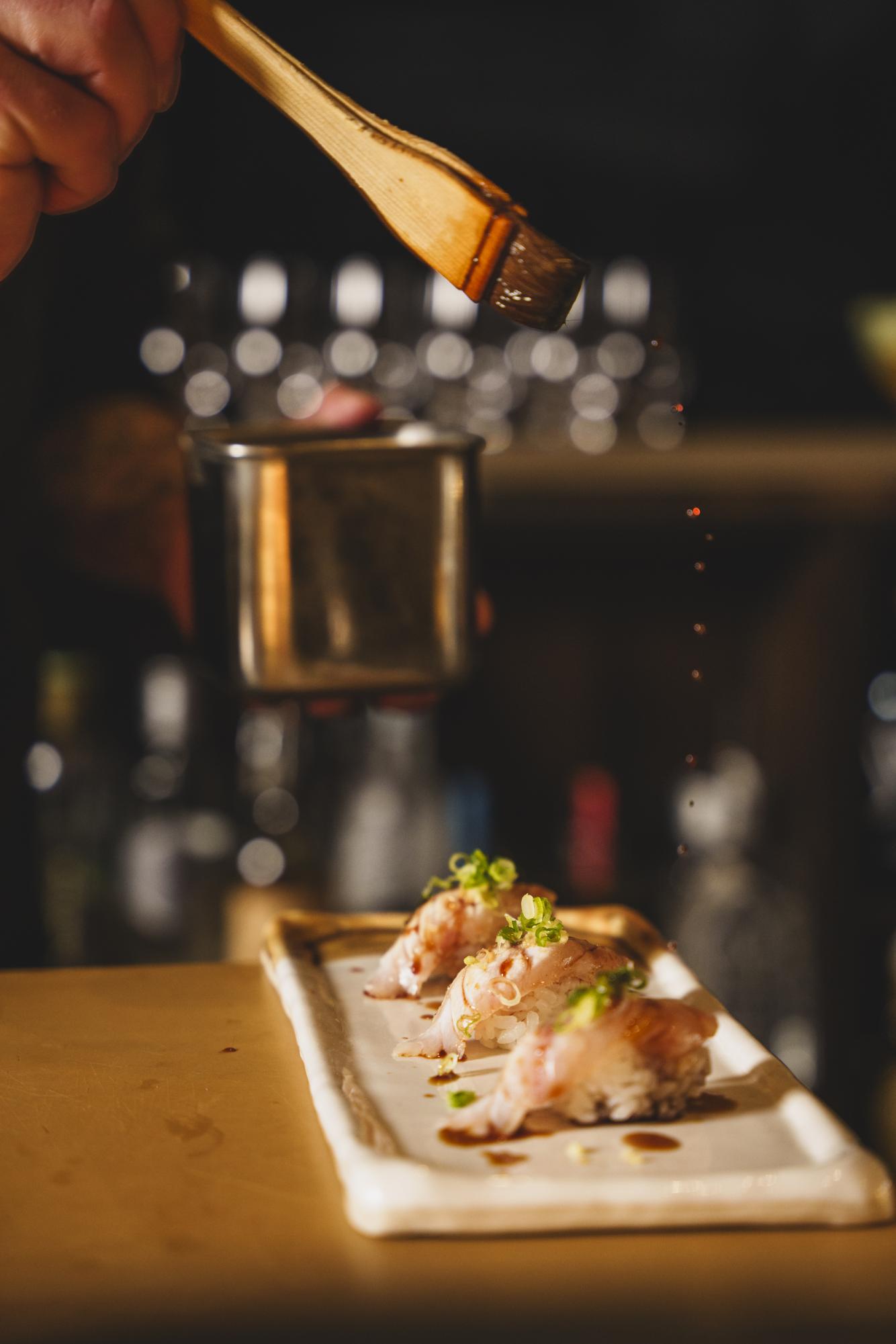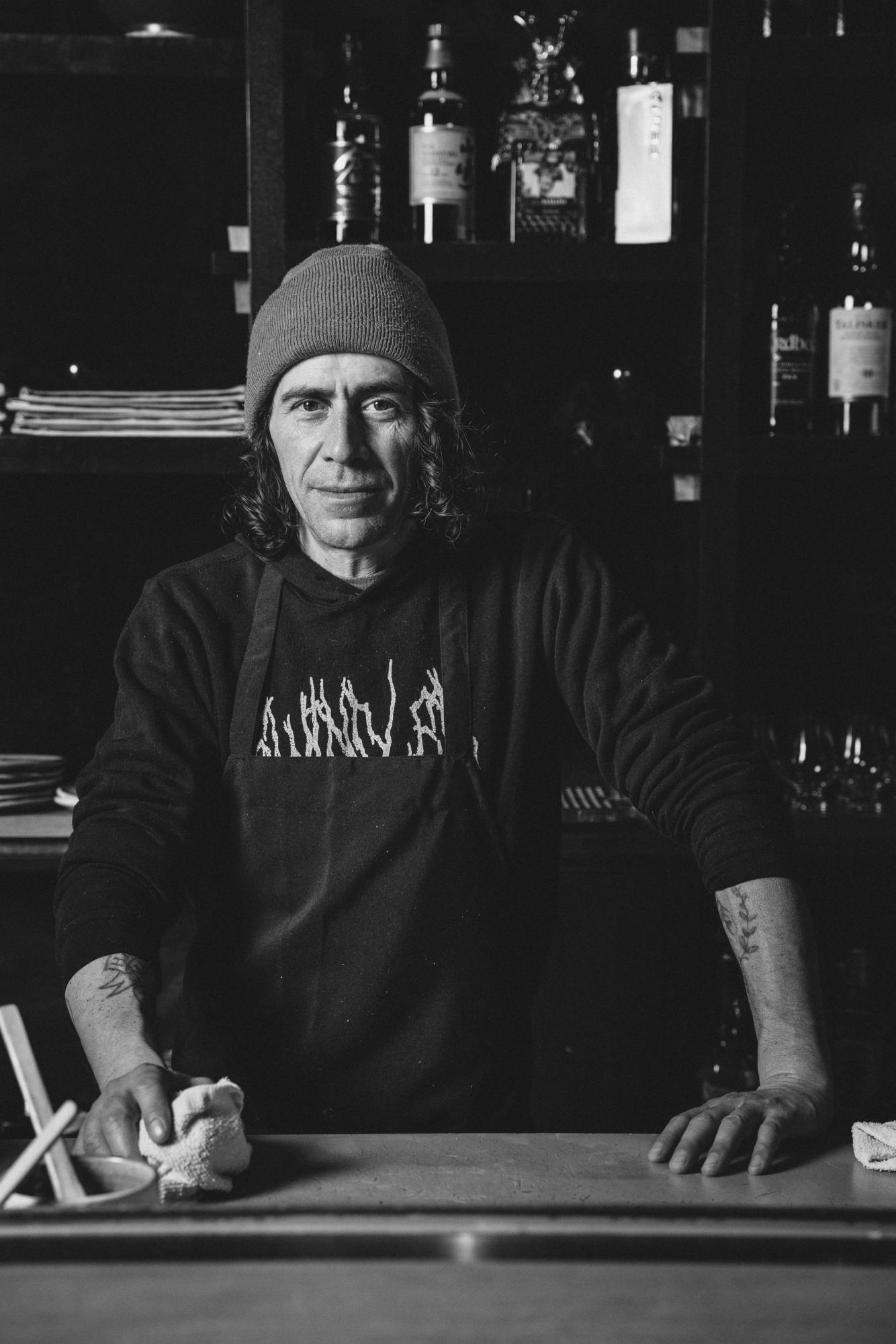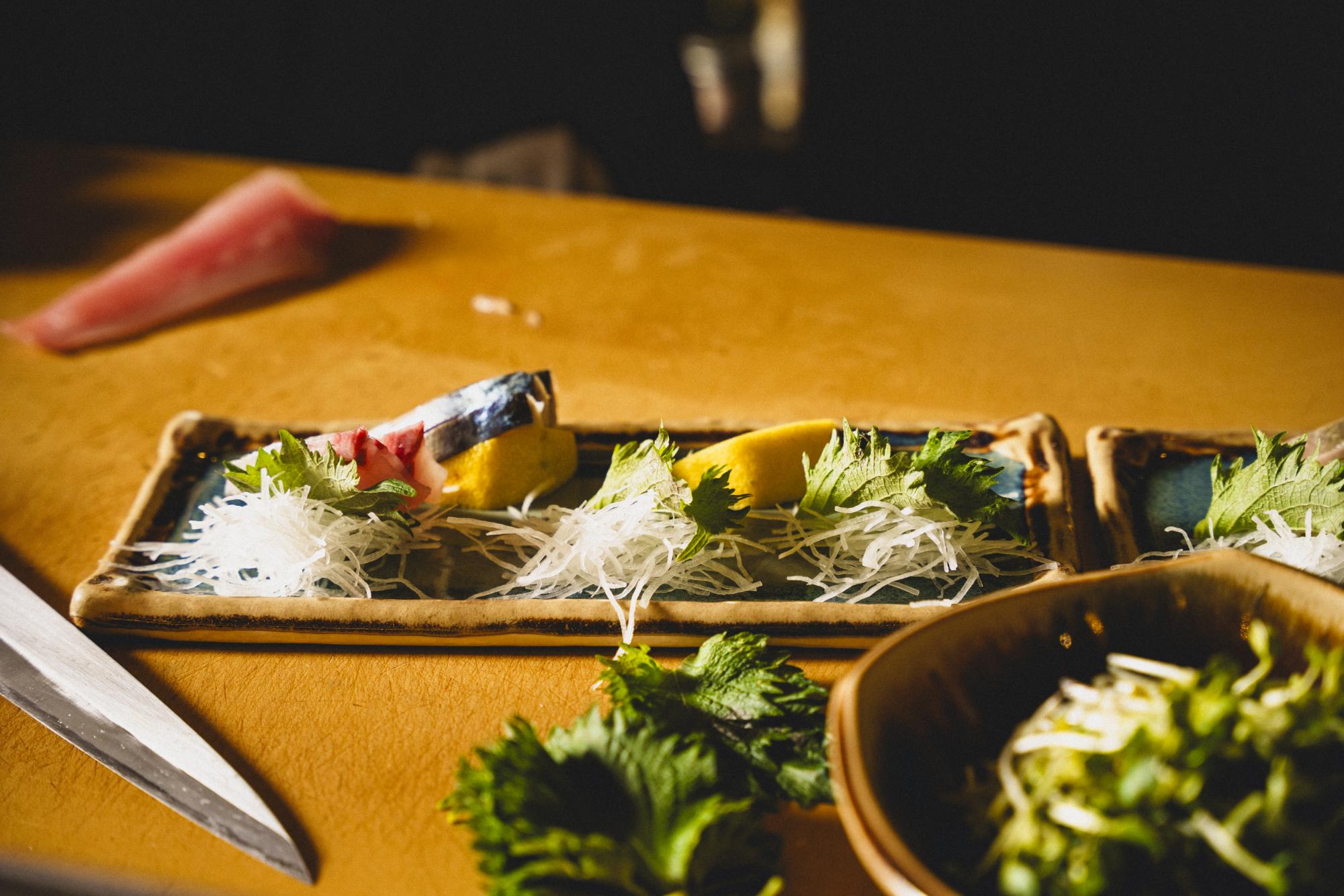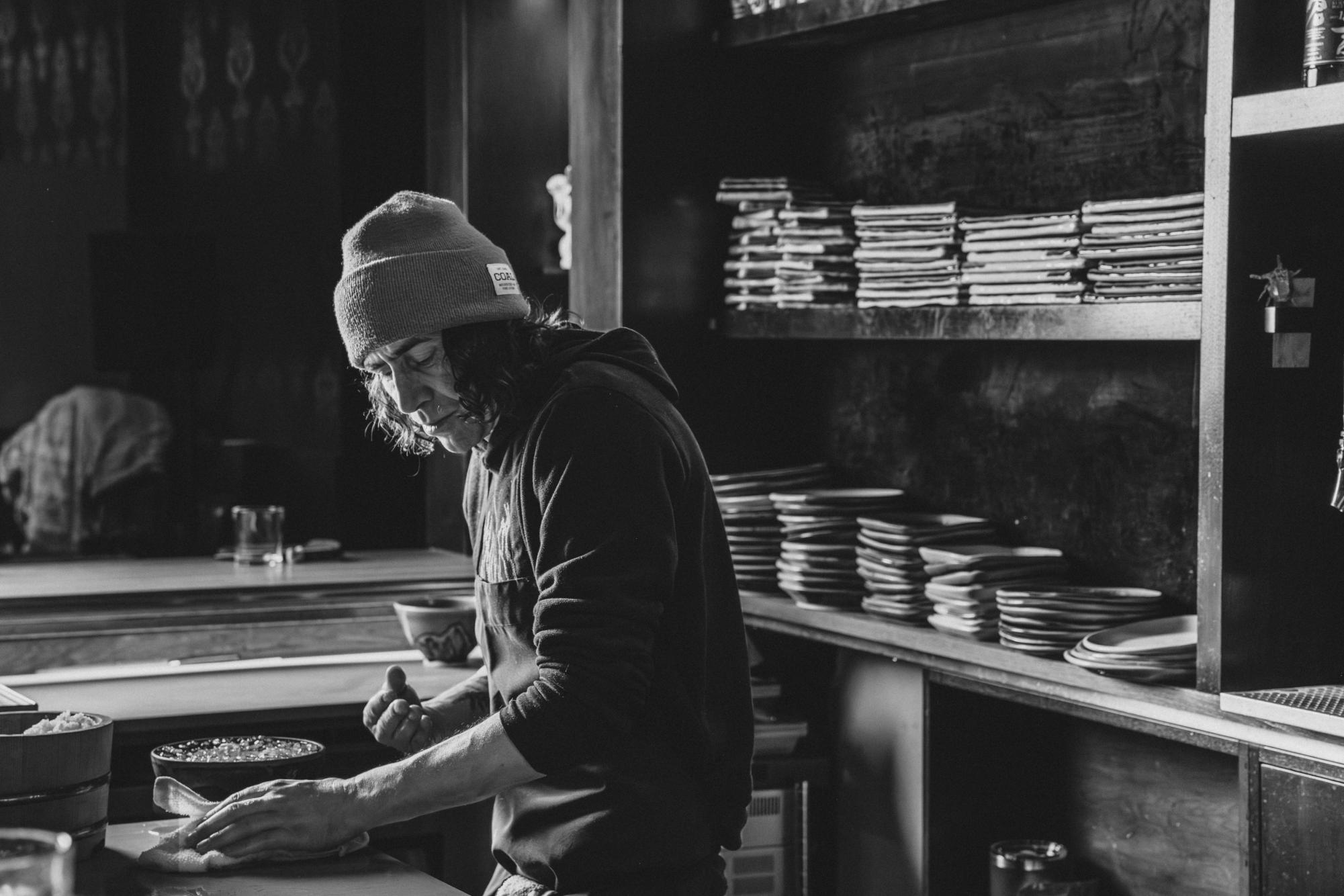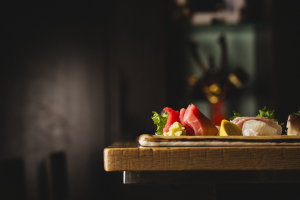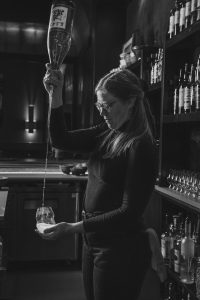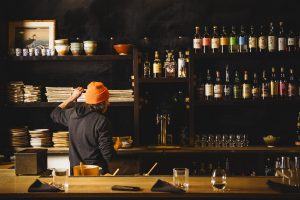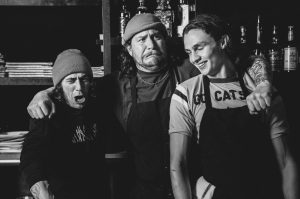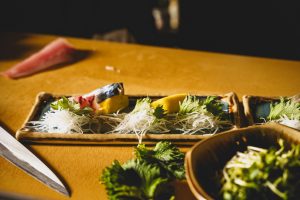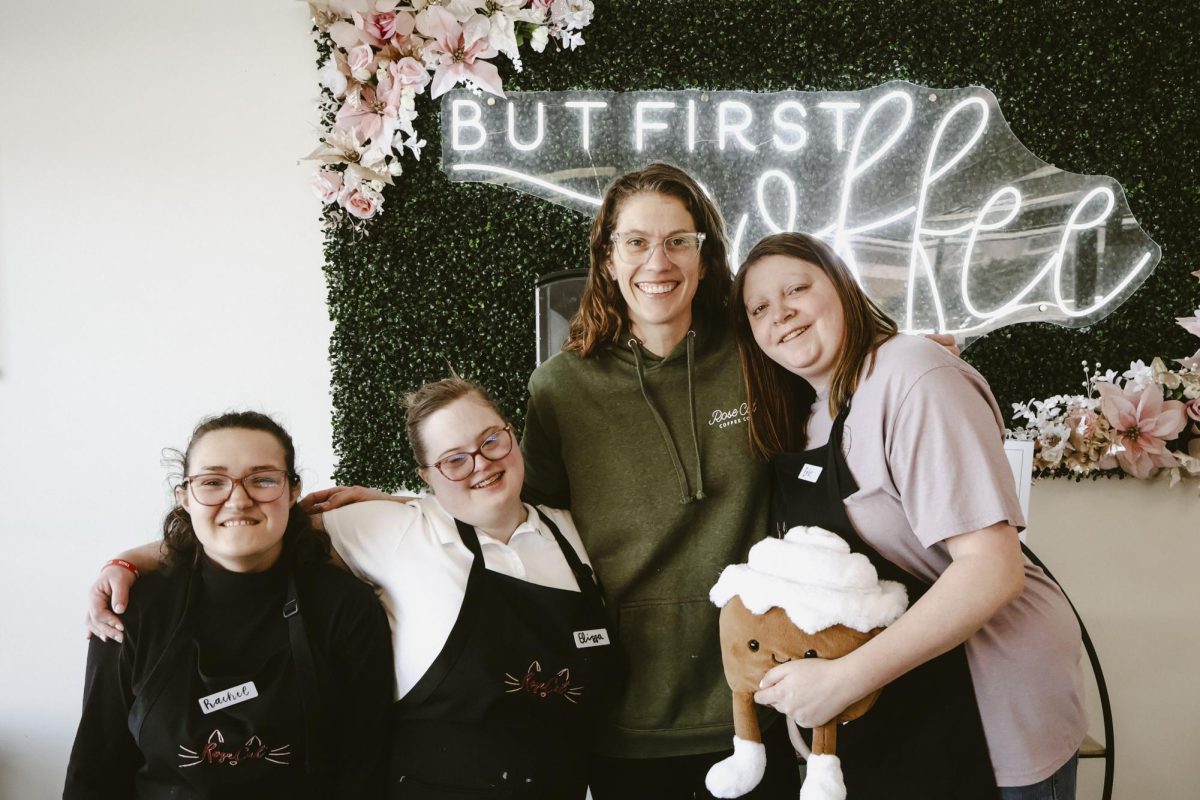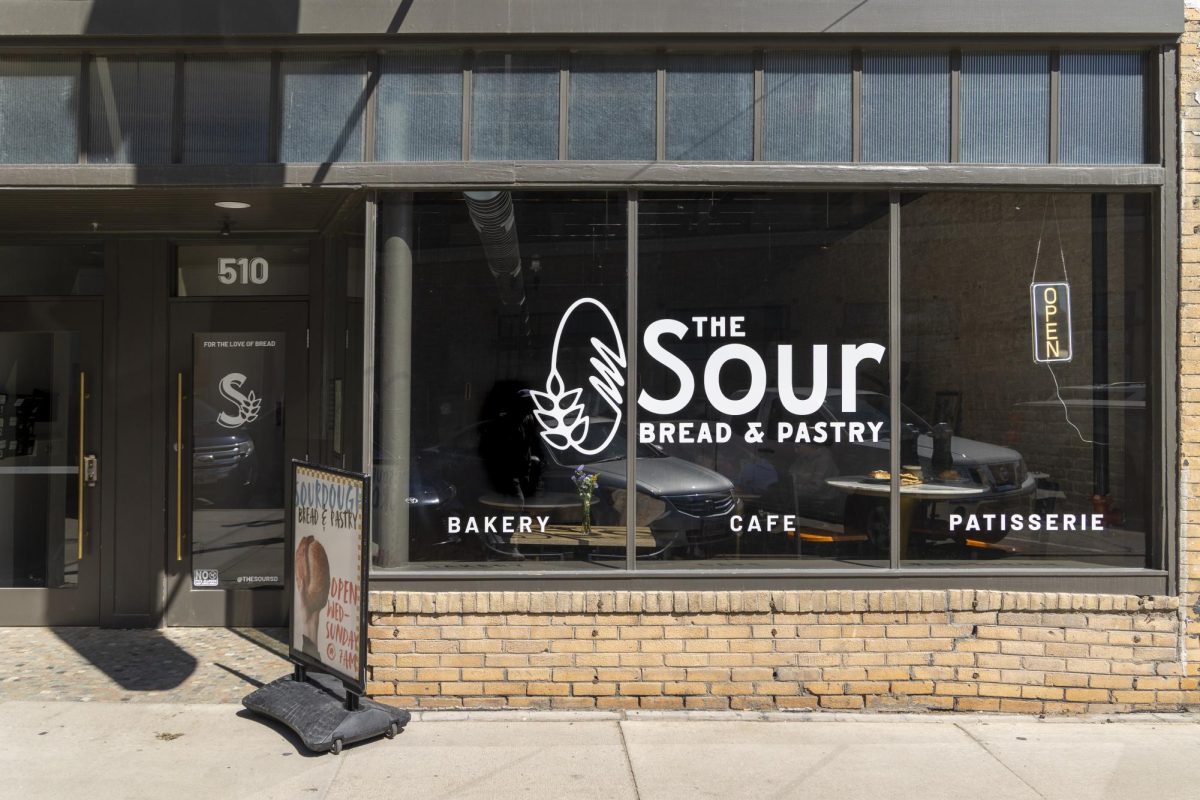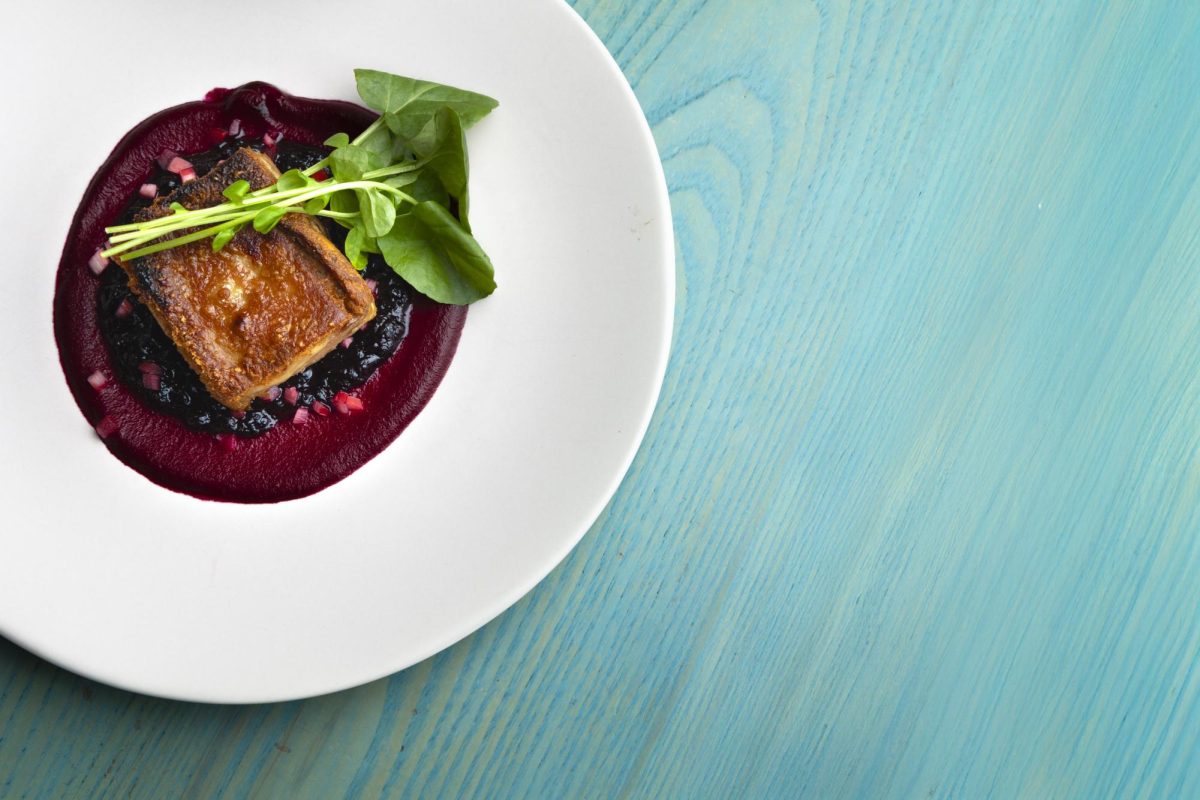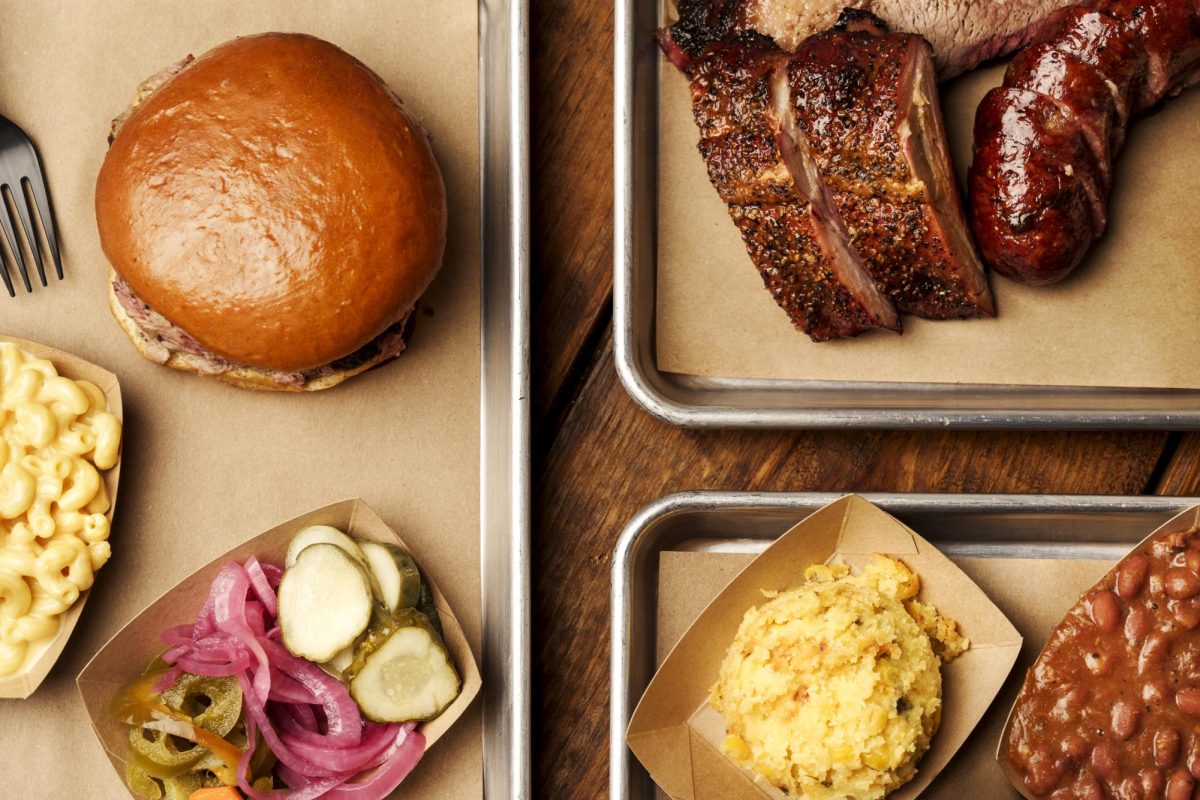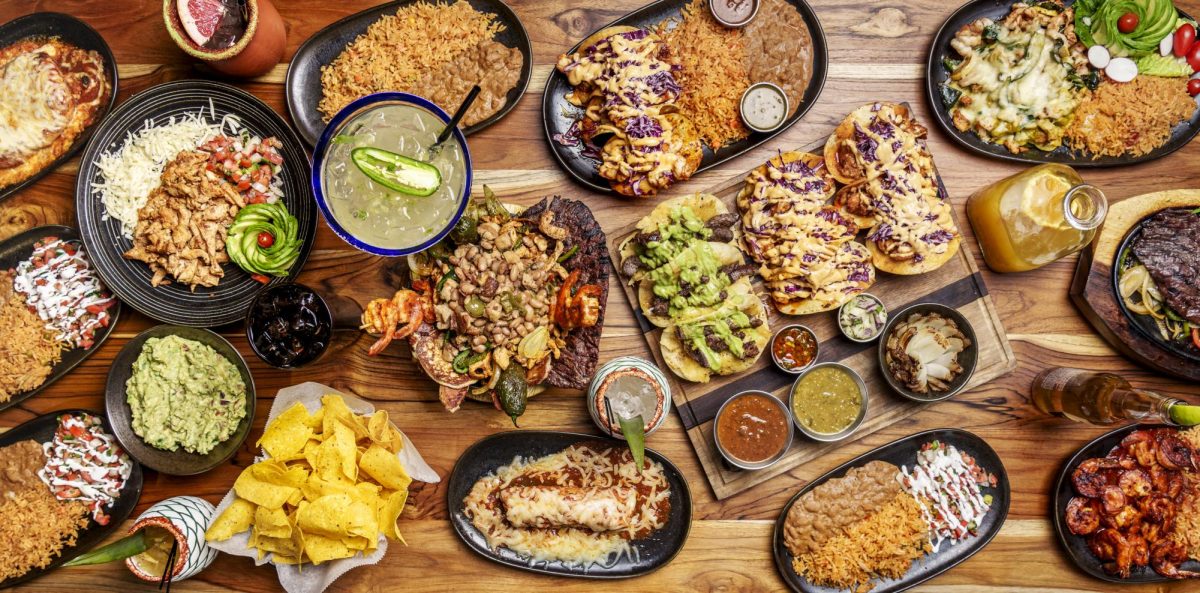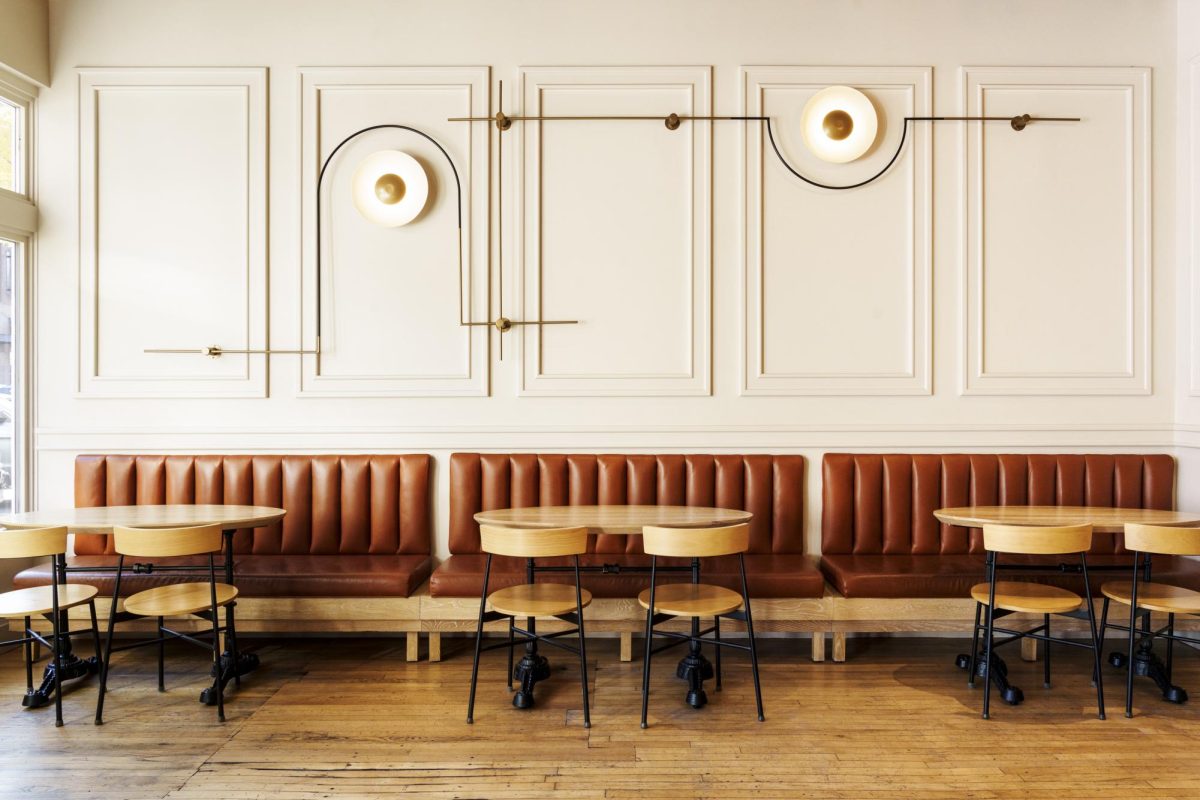Omakase Evolution
Omakase, a Japanese phrase meaning, “I’ll leave it up to you,” is a dining method that allows chefs to serve patrons whatever they want without the hassle of taking orders. This method also allows chefs to showcase techniques they specialize in while giving patrons a curated menu that may go along with seasonal trends or themes utilizing the freshest ingredients available.
At Izakaya Three Fish, an unassuming restaurant nestled in the heart of Bozeman, Montana, the omakase experience is taken to a new level. The restaurant, which prides itself on serving high-quality seafood and experiences, embraces this approach as a way to offer customers something more intimate and personal. The restaurant is run by Head Chef Paul Naugle and Bar Manager Maddi Honnold. The two founded the restaurant together and co-own it to this day.
“Getting the fish here is mainly what made us do omakase because it’s so difficult to write a menu and offer a bunch of different varieties that stay at the quality and freshness that we want,” Naugle said. “What we have is what we’re offering, as opposed to, ‘This is what we have, and you can order it,’ especially when there’s a lot of ingredients people aren’t familiar with.”
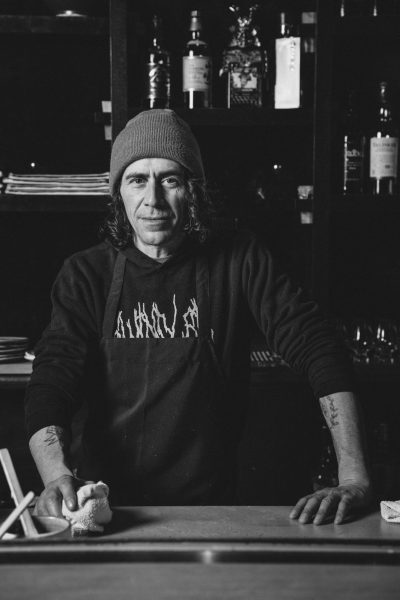 While omakase dining originated in the Edo period of Japan (1603-1868), it underwent a massive wave of popularity in the 1990s. This unique style of dining has endured to the present day and is what gives Izakaya Three Fish its signature dining experience.
While omakase dining originated in the Edo period of Japan (1603-1868), it underwent a massive wave of popularity in the 1990s. This unique style of dining has endured to the present day and is what gives Izakaya Three Fish its signature dining experience.
“When we first started, I had a sushi case,” Naugle said. “I’d put all different kinds of stuff in there, and people would come in and order salmon, tuna and hamachi. It would have all this other awesome seafood, and people just didn’t know about it enough to order it. What I want is to show [customers] stuff that they wouldn’t think of.”
This desire to help expand customers’ palates gave Izakaya a direction – a direction hard won through years of relationship building and mutual trust.
“We’ve been using the same vendor for years,” Naugle said. “When you have a rep that you’ve been working with for ten-plus years, that definitely helps a lot. This might sound a little bit weird, but a lot of Japanese fish purveyors don’t really want to send their really, really fine, high-quality stuff to people who don’t speak Japanese and who aren’t appreciating the product. I put good fish orders together, and I think they learned that I understand what I’m doing because of that.”
Whether it’s the years of trust with a Japanese fish purveyor or the creative freedom in crafting an omakase experience, Paul and his co-owner both find a deep appreciation for quality and expertise that enhances the customers’ experience.
“I think [omakase] was kind of our natural trajectory,” Honnold said. “Now, instead of people ordering all the same things, they get these super off-the-cuff, quick, in-your-face, amazing bites.”
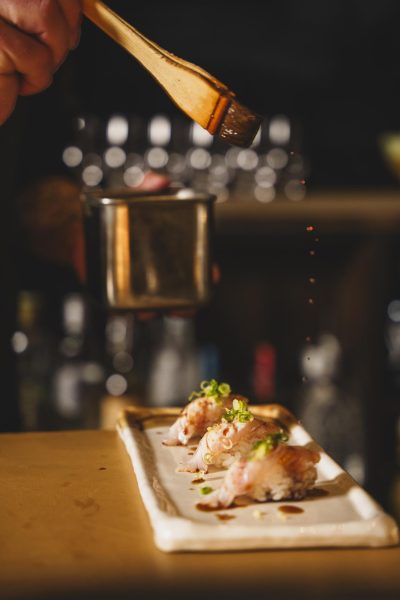 A Small Start for a Special Sushi Spot
A Small Start for a Special Sushi Spot
In 2011, Honnold came to Bozeman for college, studying sustainable crop production and plant science. Shortly after, Naugle made his way to Bozeman after growing up in Pennsylvania and eventually moving to Tahoe. One of Naugle’s friends went to college in Bozeman, and when he came to visit him, he loved the outdoorsy culture of the community. He decided to move to Bozeman and begin the next chapter of his life.
While in Bozeman, Naugle began working at the Montana Fish Company under a master who taught him to make sushi. It was at a small sushi counter in the market where he met Honnold.
They soon became close friends and moved to Oregon together to work at a Steelhead fishing lodge in the area. Honnold became interested in bartending around this time and began to learn more about the craft in Oregon.
With many great opportunities surrounding her, Honnold took classes from Rick Visser, a local culinary artist who focused on melding nature with the culinary arts. He specialized in foraging and buying local ingredients. It was with Visser that she learned to work with seasonal, locally-sourced ingredients and form them into fresh, exclusive cocktails.
During this period, the idea for Izakaya Three Fish was born. Paul would become Head Chef, and Maddi would manage the bar with her newly acquired skills.
The two, along with another business partner, Lance, loaded a truck full of all of the exclusive Japanese equipment and materials they could get their hands on so close to the coast and drove back to Bozeman to begin their journey as business owners.
They had secured a $70 thousand loan, and they intended to make the most of it. Honnold, Naugle and Lance found a location and opened the first iteration of Izakaya Three Fish as a private event and catering service.
“We ran out of money instantly,” Naugle said. “It was really tight there for a long time.”
The challenges of opening a new business hit the aspiring entrepreneurs hard. Managing budgets, finding clients and customers and having to deal with their partner, Lance, leaving the business provided trying times for Honnold and Naugle.
The pair pressed on, however, eventually securing a new location in a building called The Bozeman on Main St., a location that hosted many other food establishments and bars. The perks of this new location included a building-wide liquor license, which helped them along in their venture.
“[Acquiring a liquor license] is hard in Montana because the liquor licensing laws are pretty exclusionary to small businesses and exclusionary towards sourcing small, niche products,” Honnold said. “Whatever we can get our hands on is what we’re able to serve. It’s been a crazy learning experience. I joke that the Montana Tavern Association is like a legal version of the mafia because of how difficult it is sometimes.”
Though the path was littered with obstacles, Honnold and Naugle were finally able to open Izakaya Three Fish in its current form in February of 2018 on Valentine’s Day.
Although the two were excited to finally open their dream business, their struggle for success was far from over.
Shortly after the pair established a menu, the COVID-19 pandemic forced a shutdown through 2020. This was a challenge that many other small business owners were also fighting through at the time.
“We did take out for a little bit, and then it morphed into small private parties,” Honnold said. “So basically, [customers] would rent out the whole Omakase seating, six to ten people. It would just be individual groups, so we were still within safety regulations for the time. That’s kind of where we really leaned into the omakase.”
However, the private parties and takeout orders did not last long. As the regulations related to the pandemic shut down more and more activities and businesses, Izakaya eventually followed suit.
“We had the ability to make more off of unemployment than off of the business,” Naugle said. “There wasn’t much of a point to stay open, and after the stress, we needed a break, so we went to Roseburg, Oregon. We fished for the rest of the lockdown.”
While fishing and back in Oregon, Honnold and Naugle reworked the concept of Izakaya for re-opening, and once the lockdown ended, the pair went back to Bozeman and focused on shifting to the omakase business model they have maintained to this day.
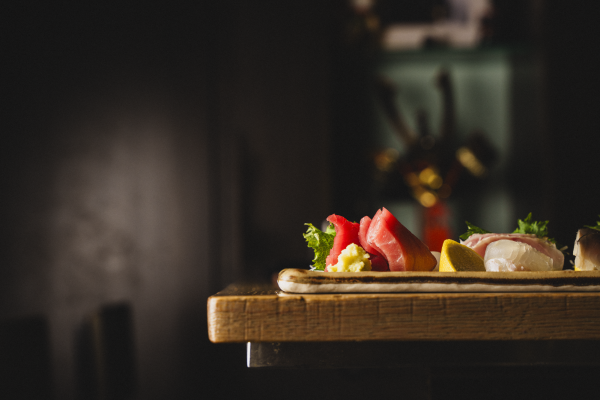 Unpacking the Experience
Unpacking the Experience
The meal consisted of 10 courses, including dessert, and began with a punch in the face that would immediately grab anyone’s attention.
Naugle started the meal with olive flounder nigiri, doused with fresh lemon juice and maldon salt sprinkled on top. The tartness of the lemon, contrasted with flaky salt, awakened the senses and made sure everyone was ready for the meal to begin. The delicate flounder gave a nice rounded sweetness to the bite.
He then immediately moved on to the next course, which was raw Nantucket oysters on the half shell served in yuzu vinegar with a dot of sriracha on the rim of the shell. This was a bold, cold bite that, while still invigorating, helped mellow the senses and coast nicely into the next course.
The third course was a Japanese red snapper nigiri with white soy. This was an earthy bite where the deeper flavor of the white soy helped bring out the bright tones of the snapper.
Naugle then ushered out the fourth course, Motoyaki oysters baked with miso sauce and freshly torched, smoked cheddar cheese on top. These oysters had a warm, comfort-food element to them. They were delicious and a nice change of pace from the punchy, refreshing bites that had set the tone for the meal.
Naugle then brought out a Japanese amberjack nigiri served simply with soy sauce. This piece harkened back to his comments on some of the most popular rolls he used to serve when Izakaya offered a full menu. He proved that this fish is a classic for a reason.
After a short pause, Naugle resumed the meal with an experimental blend. Dungeness crab and raw scallops served on a fried wonton along with sliced serrano peppers, avocado and slivered red onion. The crab brought a rich, sweet aspect to the dish, while the scallops allowed for some texture and fresh seafood taste while maintaining the sweeter notes.
The wonton contributed a fun, crunchy element, and the serrano peppers added some kick and additional crunch to the bite. The use of avocado brought some fat to the palate, and the onions gave more depth to the flavor and added a sweet tang to the end of the bite.
Naugle then went for an intense flavor profile, serving a smoked trout roe maki. The smoke from the trout roe briefly overwhelmed the senses, revitalizing anyone who may have become complacent at this point in the meal. The saltiness of the roll and nori, paired with the intense smoky flavor of the roll, gave a hardy, savory bite.
Naugle then served another classic: tuna. However, he wanted to highlight one of his favorite parts of the tuna. Toro, which is the belly fat of a tuna, brings a rich, fatty element to dishes. This toro was served as nigiri with no elements other than the rice, fish and soy sauce. He served it with freshly grated wasabi, and with a dash of that on top, the bite came alive. The saltiness from the soy sauce highlighted the fatty nature of the fish.
For our last savory course, we were served miso soup with dungeness crab and matsutake mushrooms. A lovely twist on a classic miso soup, the dungeness crab contributed sweetness to the umami of the soup, and the mushrooms were earthy, had a snappy texture and weren’t overcooked. This course was immensely filling and made sure that if anyone wasn’t full from the last eight courses, no one would leave hungry.
For the final course, we were given dessert, a housemade vanilla bean ice cream garnished with olive oil and Maldon flake salt. This salt is interesting as it’s prized for its pyramid-shaped crystals and is exclusively harvested in England. It has a very smooth taste and provided a nice crunchy texture to the ice cream. The olive oil was earthy and complimented the floral nature of the vanilla. The whole dessert together was a nice ending to the meal, showing that even with dessert, Naugle can give a patron a strong but well-rounded dish.
During the meal, Honnold served customers a number of diverse and original beverages. One of these concoctions was a mocktail called the Matcha Mamma, a drink with ceremonial grade matcha, whisked at the counter, mixed with seltzer water and Aperitivo bitters.
The drink had delicate floral notes from the matcha, nicely opened up and properly brewed, and the bitters gave a nice splash of color and a citrus undertone that gave the drink a refreshing crispness.
Throughout the meal, Naugle, Honnold and their other employees focused on the human connection of food as well. They kept the conversation flowing, and with how amicable and natural everything felt, it was as if they knew everyone at the bar for years and were merely catching up with old friends over dinner.
The team at Izakaya Three Fish, working through the trials and tribulations of business ownership in the town of Bozeman, Naugle and Honnold have carved their place with impressive bites, striking beverages and world-class attitudes.

